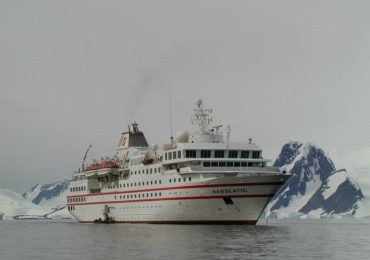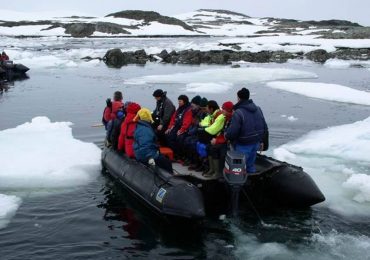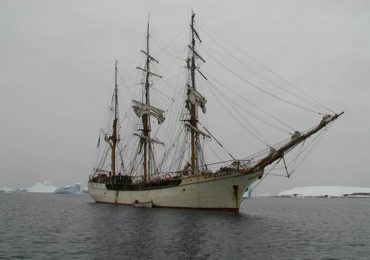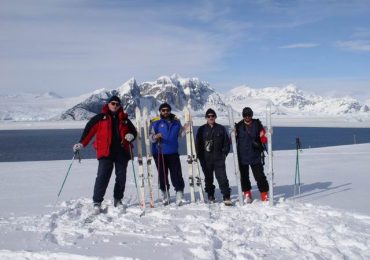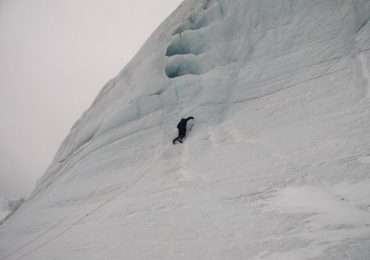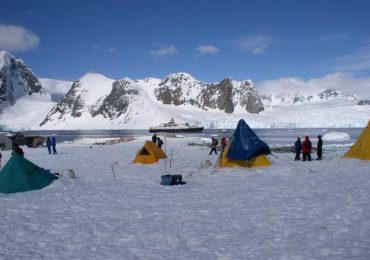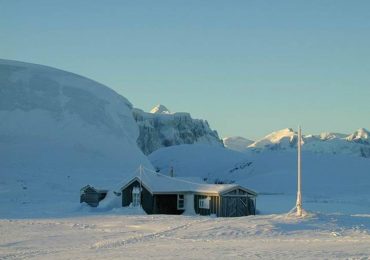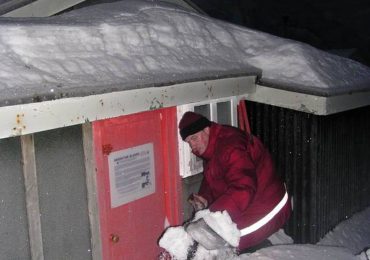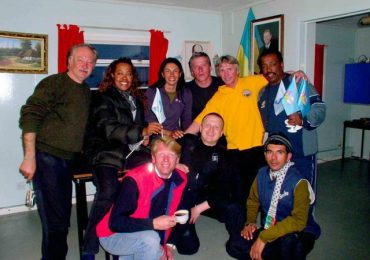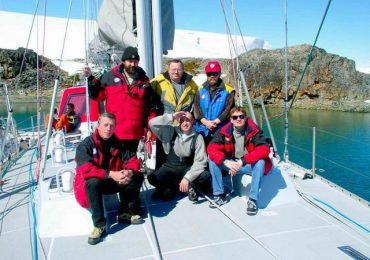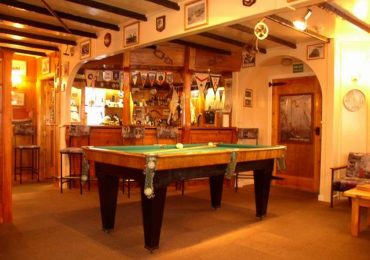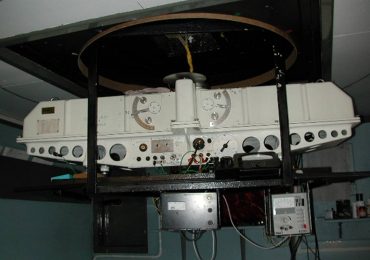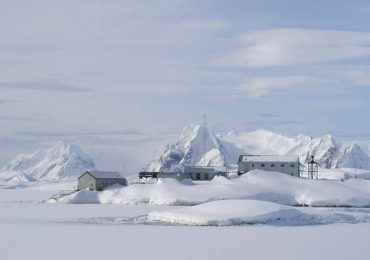Tourism in Antarctica
The growth of world demand for adventure tours and the consequent significant expansion of the geographical scope of travels have led to the active development of international tourism in Antarctica, which for more than two decades has been the largest and the most dynamic type of human activity in the region. The number of tourists steadily exceeds several times the number of scientists and support staff working at research stations and involved in Antarctic expeditions.
Almost every cruise has not been without visitors to coastal research stations, including the Ukrainian Akademik Vernadsky station, which is noted for its high and stable popularity among foreign tourists due to its geographical position.
Sea cruises and yachting
The most popular types of Antarctic tourism are sea cruises along the Antarctic Peninsula and the ports of Ushuaia (Tierra del Fuego, Argentina) or Punta Arenas (Chile). The following activity is widely practiced during the cruise:
- sea walks on zodiac inflatable boats;
- landings and walks on ice-free coastal areas;
- photo and video shooting of colonies of penguins, sea seals, etc.
Traveling on private yachts is also popular. The Argentine Islands Archipelago, where the Ukrainian Akademik Vernadsky station is located, has comfortable yacht moorings.
Adventure tourism
Traditional sea journeys are often combined with adventure or even extreme types of tourism:
- sailing on ocean kayaks;
- diving, underwater filming and photography (water transparency – up to 100 m);
- skiing;
- a few days’ stay in a campground on the shores of the picturesque Booth Island, Hovgaard Island, Petermann Island, the Argentine Archipelago Islands, as well as on the Graham Coast (Antarctic Peninsula);
- climbing the coastal mountain peaks of the Graham Coast: Mount Demaria (638 m), Mount Mill (735 m), Mount Scott (882 m), Shackleton (1465 m) and Peary (1900 m).
“Wordie House”
Base F (Winter Island, Argentine Islands) is of historical importance as a sample of early British scientific base. Constructed in January 1947 on the site of a previous building built for the wintering members of the British expedition to Graham Land in 1935-36; the base operated until May 1954.
The original main building, Wordie House, was extended in 1951; It consists of living and working premises, a dining room, a generator room and storage facilities. Near the building a flagpole has been preserved.
On May 19, 1995, the Wordie House construction was designated within the framework of the Antarctic Treaty as a historic site and monument No. 62.
The Wordie House is protected, but is not closed for visitors. However, tourists should follow the rules:
- Before the visit you should obtain permission from the Akademik Vernadsky station leader.
- Visitors should register their stay in the house in the visitors’ book.
- Inside the building there can be no more than 10 people at a time.
- In order to avoid a fire in the building, it is prohibited to use portable heaters and stationary furnace; smoking is also forbidden inside the building as well as within a radius of 10 meters from it.
- It is forbidden to take any things out of the building.
- Visitors should leave the building closed and in good condition. They are personally responsible for the damage caused.
A virtual visit to Wordie House historic site
Akademik Vernadsky Station
The Ukrainian Antarctic Akademik Vernadsky station performs both scientific and specific representative functions, since because of its geographical location it is often visited by tourists from international Antarctic sea cruises.
From December to March (during the summer season) the Argentine Islands Archipelago, where the Ukrainian station is located, is visited by dozens of tourist ships and yachts with short-term visits – totally from 2000 to 5000 visitors per season.
Ukrainian polar explorers organize a tour of the station for guests.
The attention of tourists is attracted by scientific laboratories, the companion cabin, the library and the famous Faraday Bar.
Also, an important historic site and tourist attraction is “Wordie House” – the museum of the early British scientific base.
The Guidelines for visitors
- Leader of tourist expedition (ship captain) should warn the Station Leader about a visit not less than 24-72 hours before arriving and coordinate the time and conditions of the visit.
- To obtain the permission to visit the station it is necessary to provide the Station Leader with the following information: name of the vessel and country of its registration; name of the captain and name of the tourist expedition leader; purpose of the visit and the number of visitors including support persons; other information on demand of the Station Leader.
- Permission is allowed if the visit not interferes with the implementation of regime scientific observations and logistics operations of the station.
- Tourists form groups of up to 30 people. Usually station tour lasts approximately 30-45 minutes per group. The total time of the visit should be not more than three hours.
- It is forbidden to enter the buildings, storage facilities, etc. without the permission of the station personnel.
- Tourists should adhere to the principles of the Antarctic Treaty System, in particular the Protocol on Environmental Protection, Resolution XVIII-1 (rules of conduct for tourists and tour operators), and other regulatory documents adopted at Antarctic Treaty Consultative Meetings.
Famous guests of Akademik Vernadsky station:
David Wilson – grandson of Robert Scott;
John Ridgway , a famous traveller, who made a 200 days non-stop voyage round the world on his yacht “English Rose-4”; besides, he had never approached the shore and had not even seen it. He also was the first traveller which crossed the Atlantic Ocean on oars;
Don Walsh, who together with Jacques Piccard were aboard the bathyscaphe Trieste when it made a record maximum descent into the Mariana Trench, the deepest point of the world’s oceans;
Pelagic Australis yacht known for its round-the-world travels on board of which there were together for a month the Palestinians and Israelis demonstrating to the world the possibility of peaceful coexistence. At the end of the voyage, a common ascent to the nameless peak of the Antarctic Peninsula was carried out at a distance of 70 km from the Ukrainian station. In honor of the joint ascent the mountain was called the Palestinian-Israeli Commonwealth. This cruise of peace was planned for two years; the world’s leading TV channels watched the events. The official completion of the mission was celebrated at Akademik Vernadsky station.


